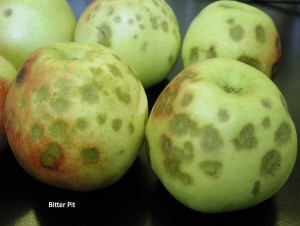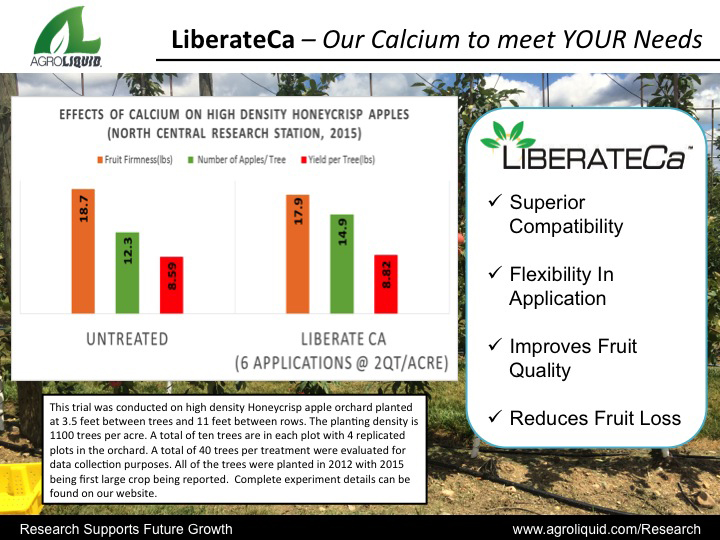Why is calcium important?
Calcium is the third most important element in a plant. And, calcium is the fifth most abundant element on the planet. It makes sense that traditionally, growers don’t apply much calcium, because they assume the plant will get what they need from the soil. But, calcium is usually found in a form that is not easily taken up by plants.
In an apple tree, the leaves, new shoots, and fruit all take calcium and the nutrient will be found in the tissues and the root, but, the fruit cannot compete with the other parts of the plant hence why the fruit often doesn’t get enough calcium. That is why calcium deficiencies are evidenced on the fruit, rather than the rest of the tree. In apples, a calcium deficiency causes a disorder known as bitter pit. Bitter pit is a physiological breakdown of the cell walls in the fruit that occur below the skin of the fruit. For that reason, when scouting for calcium deficiencies, it is important to test the fruit, rather than relying solely on leaf or soil tests.
In this particular trial, Horticulturists were testing for fruit firmness, how many apples produced on each tree, and how much the fruit weighs. At the North Central Research Station High-Density Apple Orchard, researchers test approximately 10 apples per experimental plot for firmness. They use a pentameter, which measures the pressure needed to break the cell part inside the apple. They test four spots on each apple, as research has shown there is a difference in firmness between the side of the apple exposed to sun, versus the shade-side. The average fruit firmness is reported.
A trial of the effects of LiberateCa™ in 2015 at the NCRS High-density Apple Orchard in Michigan showed that the apples treated with LiberateCa™ fall close to the preferred range of 14.5 lb – 17.5 lb for fruit firmness, while the untreated trees’ fruit firmness was significantly higher than desired. In addition, the treated trees had more apples per tree, and overall yield per tree increased as well. These trees were planted at 3 ½ feet between trees, 11 feet between rows, with a planting density of 1,100 trees per acre.
“If you can hang two more apples per tree, with 1,100 trees, you have 2,200 more apples – and that means more money in your pocket.” Horticulturist Jacob Emling



